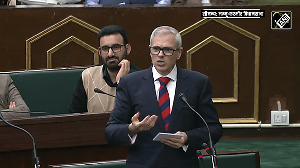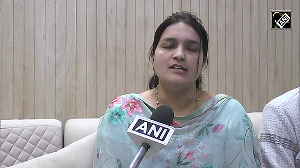The controversial conditional access system that was supposed to be introduced in the country way back on July 14, 2003, has not still seen the light of day.
Even in its limited implementation in Chennai and south Delhi, it has raked up more controversy and confusion than any other event in the history of the Indian television industry. What explains the stalemate in CAS implementation?
The New Cable TV Regime: Complete Coverage
First, why CAS? As in the classic principal-agent problem, the under-reporting of their subscriber base by local cable operators was the motivation for broadcasters to initiate CAS so that they would be able to get their appropriate share of the subscription revenue. The government also was interested in moving towards CAS to stop leakage in the service tax paid by cable operators.
Second, through CAS, strong consumer preference for certain programmes can be tapped, and such consumers can be made to pay a premium price for their preferred viewing programmes. The desirability of CAS also stems from the free-rider problem, and the tendency of many consumers to view their most preferred channels at minimal charges.
Stronger preferences will lead to adoption of CAS while weaker preferences will persuade the consumers to stay with free-to-air channels that can be viewed without the set-top box.
Direct-to-home, when introduced in the US in the early 1990s, was a big hit as households had the luxury of receiving the channels they wanted and were relieved to be out of the clutches of monopoly cable operators.
What are the essential characteristics of consumers who opt for CAS? These are mostly households with the ability and willingness to pay for channels they prefer to view. Demographic profile is also an important factor.
Note that consumers with special preferences -- those with flexible jobs, housewives (soap operas on Zee and Sony) and children (Cartoon Network and Nickelodeon) -- are those who are likely to adopt CAS for their preferred channels. (For instance, during the recent test match between India and Australia, many CEOs stayed back at home late in the morning just to watch the winning shot.)
Finally, we observe that CAS is likely to be successful only with consumers educated beyond a certain level. For instance, not very well-informed consumers who are merely "couch potatoes" or TV addicts watching whichever programme that appears, and those who do not understand the implications of CAS, would just prefer not to pay for CAS as long as they have a functioning TV. Irrespective of whether the government is willing to let CAS live or die, it is worth analysing the success and sustainability of CAS in the Indian cable industry.
From the consumer's point of view, CAS can be considered a normal good. Its income elasticity of demand is positive. Metros and urban areas with increased disposable income among the populace will have higher probability of subscription to CAS. Price elasticity of demand for CAS is negative, as reflected in the a la carte menu of channels.
That is, a la carte channels exist only because even CAS-preferring consumers would not want all pay channels and are likely to back out if the only option were to purchase all pay channels and this price were to be set high.
The other determining factor for the success of CAS is the optimal mix of advertising and subscription revenue the broadcaster gets. Out of the television industry revenue of Rs 111 billion in 2002-03, Rs 60 billion was from subscription revenue.
While broadcasters of FTA channels earn their revenue through advertising, pay channel broadcasters get both subscription and ad revenues. However, if CAS subscription does not pick up, even the advertisers will turn their backs on pay channels and move over to FTA channels for viewer base.
So, broadcasters have to tune-in to the needs of the customers more carefully than ever before. The recent high pricing of a la carte channels compared to price of channel bouquets will sound the death knell of CAS subscription.
Broadcasters also have to learn to practice better yield management by choosing optimal pricing strategies for advertising and subscription. Hence, the success of CAS depends on the price of pay channels and the ability of the broadcaster to provide niche content.
Finally, is CAS needed? It is very similar to users paying additional charges for certain value-added services, such as for SMS in cellular service. CAS makes broadcasters and cable operators accountable for their services, which was not the case before.
Hence, the government should break the imbroglio and go for its full implementation. If it rolls back CAS in south Delhi due to its populist attitude, confusion will continue to prevail regarding the government's stand.
This is quite similar to constructing a multi-lane highway and not persuading road-users enough to pay toll. When can we ever expect the reforms to percolate to consumers?
Dr Kala Seetharam Sridhar is a fellow at National Institute of Public Finance and Policy and Varadharajan Sridhar is professor at Management Development Institute





 © 2025
© 2025